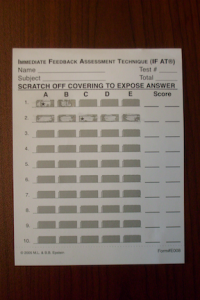I was recently introduced to the lightboard technology and immediately I was hooked.

My discovery of the lightboard was timely as CTE colleague Mark Morton and I had just been discussing the mirror paradox, which is so eloquently explained in this Washington Post piece . Mirrors challenge us intellectually – oh you really do have to love physics! Seeing a lightboard video presentation for the first time has the same effect (or did for me anyway). The first thought that went through my mind was “WOW….he can sure write backwards well!” Watch this one minute video to see what I mean: https://youtu.be/N1I4Afti6XE.
The original Lightboard designed by Michael Peshkin, an Engineering Professor at Northwestern University, allows the creation of videos that are filmed in reflection using a mirror, resulting in the apparition of the skilled backwards writer. Another option for creating lightboard videos is a post-production digital horizontal flip of the video. I, however, am partial to the mirror model, which in addition to having a “cool” factor allows for the video to be uploaded instantly with no post-production processing.
So whimsy aside, what is a lightboard exactly? How and why would it be useful in teaching? In most simple terms a lightboard is an illuminated sheet of glass on which an instructor writes with fluorescent markers, as on a whiteboard or chalkboard. The major difference is that instructor is facing the “audience”. This is absolutely an improvement on the traditional chalkboard where an instructor’s back is facing the audience when writing and often, unfortunately, while speaking. As Peshkin says ” that just gives you a little bit better sense of engagement with your students as you’re talking, and gives them a better sense that they’re being spoken to, rather than somebody just writing.”
Some might argue that these videos are too instructor focused. I would argue however that the presence of the instructor is much of what makes these videos work. In part, it is the human presence that draws the viewer in and helps develop instructor immediacy, something often difficult to attain in online and blended course videos. The other aspect is the potential for increased learning over a traditional voice-over PPT presentation. By actually watching the physical steps taken to solve a problem, for example, and seeing the visual emphasis placed on specific steps or items learning can be enhanced. A recent study by Pi el al. confirmed this; finding that student attention and learning was significantly increased using pointing gestures in recorded video lectures over non-human (PPT animation) cues or no cues at all (Pi et al., 2016).
I truly think the lightboard technology is not a gimmick, but is rather another great instructional tool that can be used to help explain challenging concepts. I believe that this technology can be used to create rich learning opportunities for flipped, blended and online courses.
I am currently working with our audio visual studio team to determine the feasibility of building a lightboard here at the University of Waterloo. I know a number of faculty already interested in using it and studying its educational value if we build it. I would love to hear from others interested in using this technology when we have it operational, so please get in touch.
ELI: 7 things you should know about Lightboard http://net.educause.edu/ir/library/pdf/ELI7111.pdf
Northwestern Lightboard http://lightboard.info/
UBC Lightboard http://ctlt-lightboard.sites.olt.ubc.ca/
https://sites.google.com/site/northwesternlightboard/lightboards-of-the-world
Pi, Z., Hong, J. and Yang, J. (2016), Effects of the instructor’s pointing gestures on learning performance in video lectures. Br J Educ Technol. doi:10.1111/bjet.12471






